Nonlinear control technology for ultrasound based on sound pressure measurement analysis.
The Ultrasonic System Research Institute has developed a technology to control nonlinear ultrasonic phenomena by utilizing the interactions generated from simultaneously oscillating two types of ultrasonic probes from one oscillation channel of a function generator. Note: Nonlinear (resonance) phenomena refer to the resonance phenomenon of ultrasonic vibrations that occurs due to the generation of harmonics resulting from original oscillation control, realized at high amplitudes through resonance phenomena. By optimizing the ultrasonic propagation characteristics of various materials according to their intended purpose, efficient ultrasonic oscillation control becomes possible. Through the measurement and analysis of sound pressure data from ultrasonic testers, this system technology allows for the control of dynamic changes in surface elastic waves according to their intended use. In practical terms, the simultaneous oscillation (sweep oscillation, pulse oscillation) of multiple (two types of) ultrasonic probes generates complex vibration phenomena (original nonlinear resonance phenomena), achieving high sound pressure at high frequency propagation states, or low frequency propagation states at high sound pressure levels tailored to the desired natural frequency.
Inquire About This Product
basic information
<<Measurement and Analysis of Ultrasonic Sound Pressure>> 1) Regarding time series data, we will analyze and evaluate the statistical properties of the measurement data (stability and changes of ultrasonic waves) through feedback analysis using a multivariate autoregressive model. 2) The effects of ultrasonic oscillation on the oscillation part will be analyzed and evaluated in relation to the surface state of the target object through impulse response characteristics and autocorrelation analysis as an interaction of ultrasonic vibration phenomena. 3) The interaction between the oscillation and the target object (cleaning items, cleaning liquids, water tanks, etc.) will be evaluated through the analysis of power contribution rates. 4) Concerning the use of ultrasound (cleaning, processing, stirring, etc.), we will analyze and evaluate the dynamic characteristics of ultrasound based on the nonlinear phenomena (results of bispectral analysis) of the target object (propagation of surface elastic waves) or the ultrasound propagating in the target liquid, which are the main factors of the ultrasonic effect. This analytical method is realized based on past experiences and achievements by adapting the analysis techniques of time series data to the measurement data of ultrasound, allowing for the analysis of the dynamic characteristics of complex ultrasonic vibrations.
Price information
Feel free to contact us.
Delivery Time
※Feel free to contact us.
Applications/Examples of results
2008. 8 Establishment of the Ultrasonic System Research Institute ... 2012. 1 Start of manufacturing and sales of ultrasonic measurement and analysis system (Ultrasonic Tester NA) ... 2024. 2 Development of surface treatment technology using megahertz ultrasound 2024. 4 Development of optimization technology for resonance phenomena and nonlinear phenomena 2024. 5 Development of optimization technology related to the combination of sound and ultrasound 2024. 6 Development of optimization and evaluation technology related to tanks, ultrasound, and liquid circulation 2024. 7 Development of an ultrasonic probe using components with iron plating on polyimide film 2024. 8 Development of a "megahertz ultrasound control" method applying Shannon's juggling theorem 2024. 9 Development of acoustic flow control technology using a portable ultrasonic cleaner 2024. 10 Development of "vibration technology" using megahertz ultrasound 2024. 10 Development of an ultrasonic oscillation control probe using a stainless steel vacuum double-structure container 2024. 11 Development of megahertz flow-type ultrasound (underwater shower) technology 2024. 11 Development of ultrasonic sound pressure data analysis and evaluation technology considering interaction and response characteristics
Detailed information
-

Ultrasonic propagation experiment (interaction of surface elastic waves)
-

Ultrasonic propagation experiment (interaction of surface elastic waves)
-

Ultrasonic propagation experiment (interaction of surface elastic waves)
-

Ultrasonic propagation experiment (interaction of surface elastic waves)
-

Ultrasonic propagation experiment (interaction of surface elastic waves)
-

Ultrasonic propagation experiment (interaction of surface elastic waves)
-

Ultrasonic propagation experiment (interaction of surface elastic waves)
catalog(23)
Download All Catalogs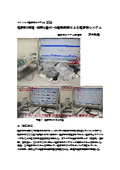

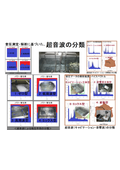
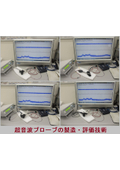
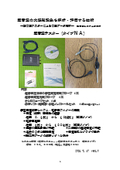

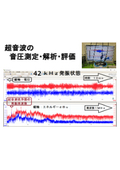
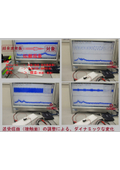
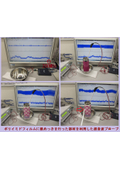

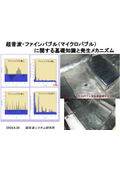
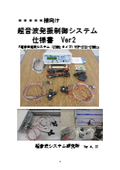

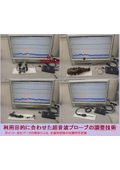
News about this product(12)
Company information
The Ultrasonic System Research Institute conducts the following activities with its original product: ultrasonic systems (sound pressure measurement analysis, oscillation control): 1) Manufacturing and sales of ultrasonic systems (sound pressure measurement analysis, oscillation control) 2) Consulting services for various equipment (Note): cleaning machines, stirring devices, processing equipment, machine tools, plating devices, welding devices, etc. Ultrasonic System (Sound Pressure Measurement Analysis, Oscillation Control) We manufacture and sell a system that combines the "Ultrasonic Tester NA (recommended type)" for easy measurement and analysis of ultrasonic waves and the "Ultrasonic Oscillation System (1 MHz, 20 MHz)" for easy oscillation control. <Patent Applications Filed> Patent Application No. 2021-125866: Ultrasonic Control (Ultrasonic Oscillation Control Probe) Patent Application No. 2021-159990: Ultrasonic Welding Patent Application No. 2021-161532: Ultrasonic Plating Patent Application No. 2021-171909: Ultrasonic Processing Patent Application No. 2021-175568: Flow-type Ultrasonic Cleaning Some of the manufacturing technology for the ultrasonic oscillation control probe is described in Patent Application No. 2021-125866. Patent Application No. 2023-195514: Ultrasonic Plating Using Megahertz Ultrasonic Waves and Fine Bubbles.














